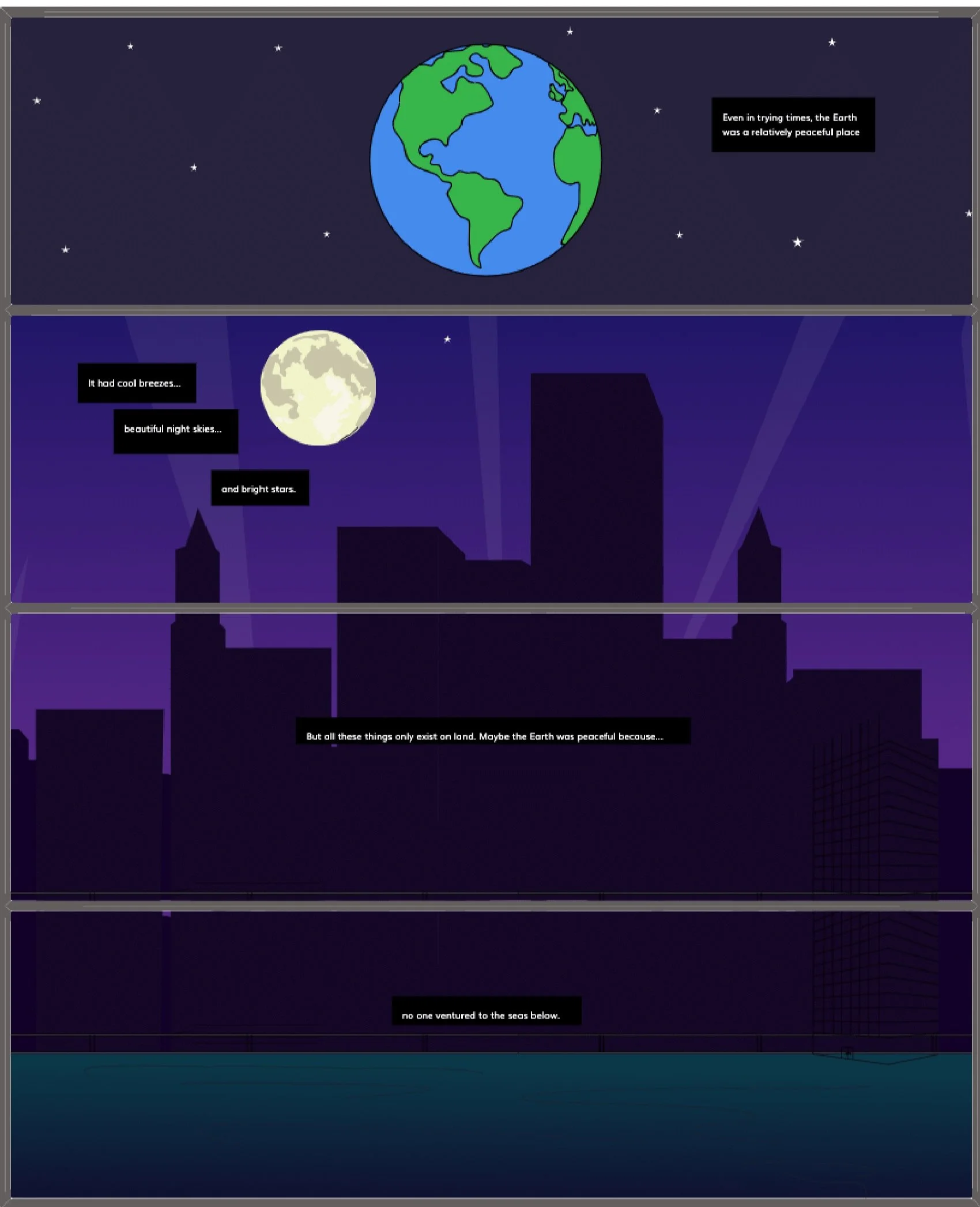How To Worldbuild: 3 Methods to Worldbuilding
How to World Build: 3 Methods to Worldbuilding
Have you ever sat down to write your story but find that you spend so much time worldbuilding that things start to get complicated?
You want your readers to understand the full context of your world, but spending time explaining all the details can end up taking away from the story itself. There is a better way to share your world's important information without overwhelming your readers.
To help you avoid explanation overload or an info dump, try using one of these three worldbuilding methods below!
First, what is worldbuilding, and why is it important?
Worldbuilding refers to the process of creating a fictional world for your story to take place. Though it may sound simple, it is not an easy task. You need to consider the rules, norms, structure, setting, and depending on the world you are building, it can become complicated.
When you have good world building, your readers will feel captivated by your story and your world. Your readers will understand what is going on with a well-developed setting, characters, and plot.
When worldbuilding goes wrong, it can be detrimental to your story. Your readers may not feel connected to your world, or they may become confused, which leads to a poor reading experience.
There is a balance between explaining and developing your world, and finding that middle ground is crucial for worldbuilding.
🔥 HOT TIP🔥 Can you build a world in Realistic/Contemporary Fiction? Yes!
Worldbuilding refers to the rules, norms, and structures that make a place come to life. For contemporary fiction, consider what factors will stay the same and which ones need to change for your story to make sense in your world.
Worldbuilding: The Scatter Method.
Instead of overloading your story with explanations at the beginning, try scattering your exposition throughout the story. It can be tempting to try and explain everything about your world all at once, but doing so will only overwhelm your readers, and it can take away from the main point of the story. Instead of info-dumping, pick and choose the most relevant information your readers need to know and share them throughout different points in your tale.
Pros of the scatter method: Using the scatter method allows you to progress your story without over-explaining and info-dumping on your readers. You can give relevant clues to share now while the story develops and foreshadow later surprises, which will create a more engrossed world for your reader.
Cons of the scatter method: If there is no later time in your story to share vital information, then the scatter method might not work for you. If you create situations in your plot to simply share information, it will come off contrived, and your readers will pick up on it.
🔥HOT TIP🔥
Some information may not be needed until right before an event happens. If that’s the case, wait to share that information until that event or scene is about to happen. Sharing information as you go will keep your readers engaged with your story as it progresses.
Worldbuilding: The Imply Method.
This method refers to sharing information in a non-obvious way through inferences. So instead of having to use lengthy explanations to describe the context of your world, you rely on your reader to make their inferences through things implied within the story. Using this method allows you to weave information into your tale through descriptions, plot developments, character dialogue, settings - and your readers come to a conclusion on their own.
Pros of the imply method: Implying or providing context clues through dialogue, descriptions, and setting may help the story become real. Think of the everyday memes and inside jokes you share with your friends. Adding inexplicable clues into your world makes it more real.
Cons of the implied method: This method is (subjectively) hard to do. It requires planning ahead of time. You, as the author, have to be a detective and leave clues for your readers to follow while also being clear enough so that all your readers assume the same/similar things.
🔥HOT TIP🔥 Your word choice is a great way to imply context! Check the examples below.
Futuristic: spacecraft, flying car, space travel: Contemporary high school: Suburban neighborhood, modern building with aluminum floors: Old Western: Dusty desert town, disheveled saloon. Fantasy: Mythical creatures, magical shape-shifting trees.
Worldbuilding: The Delete Method
Sometimes, the best thing you can do when something just isn't working in your story is to delete it. When you find yourself trying to bring more context to a situation, creating backstories, and/or over-explaining histories, it can lead you down a rabbit hole and deter you from the central point of your story. I know this might sound like an extreme action. But, if you can’t find a way to weave the information into your story without damaging the integrity of the story - it may be best to leave it out.
Pro of the delete method: You avoid lengthy explanations of contexts that are not needed to move your worldbuilding along or that do not directly relate to the central theme of your story.
Con of the delete method: Deleting something or taking out information that you are attached to can be painful. But if your readers do not need the extra information to understand the big picture, it is best to leave it out.
🔥HOT TIP🔥
Even if an idea that you love doesn't work in your current story, it does not mean it's an idea lost forever! Maybe you can include it in a sequel or as its own story in a different book. You can even let your audience infer about it and then revisit it in a different story.
Use these methods when you get stuck with worldbuilding.
So, if you are wondering how to worldbuild, try out one of these methods. Avoid overwhelming your readers by scattering information throughout your story, implying things through your language and descriptions, or deleting it altogether.
Whatever you decide, remember it all comes back to your readers. What will make the most sense for them? What will keep them interested in your story without info-dumping and overwhelming them? Finding that balance is crucial to creating a world that immerses your readers and captures their attention.
Do you need help with story ideas? Check out our latest article on How to Come Up With Great Story Ideas When You Don’t Know What To Write.
Hi, Welcome to Storyspread.com!
Comic creation made simple. Create graphic novels with a single click. Add character, backgrounds, and more.
Easy to use. Say goodbye to searching far & wide for an expensive illustrator.
Tell your story. Join other creatives, readers, and hobbyist in producing high quality & beautiful comics
Read. Read other’s comics for FREE and share with others
Grow. Grow an audience you love with the stories YOU imagined
Were you can create a comic and graphic novel WITHOUT drawing. Simple and easy! Made for all skill levels. Click-n-drag comic book characters, scences into panels.
Create a comic just like this! Here.




